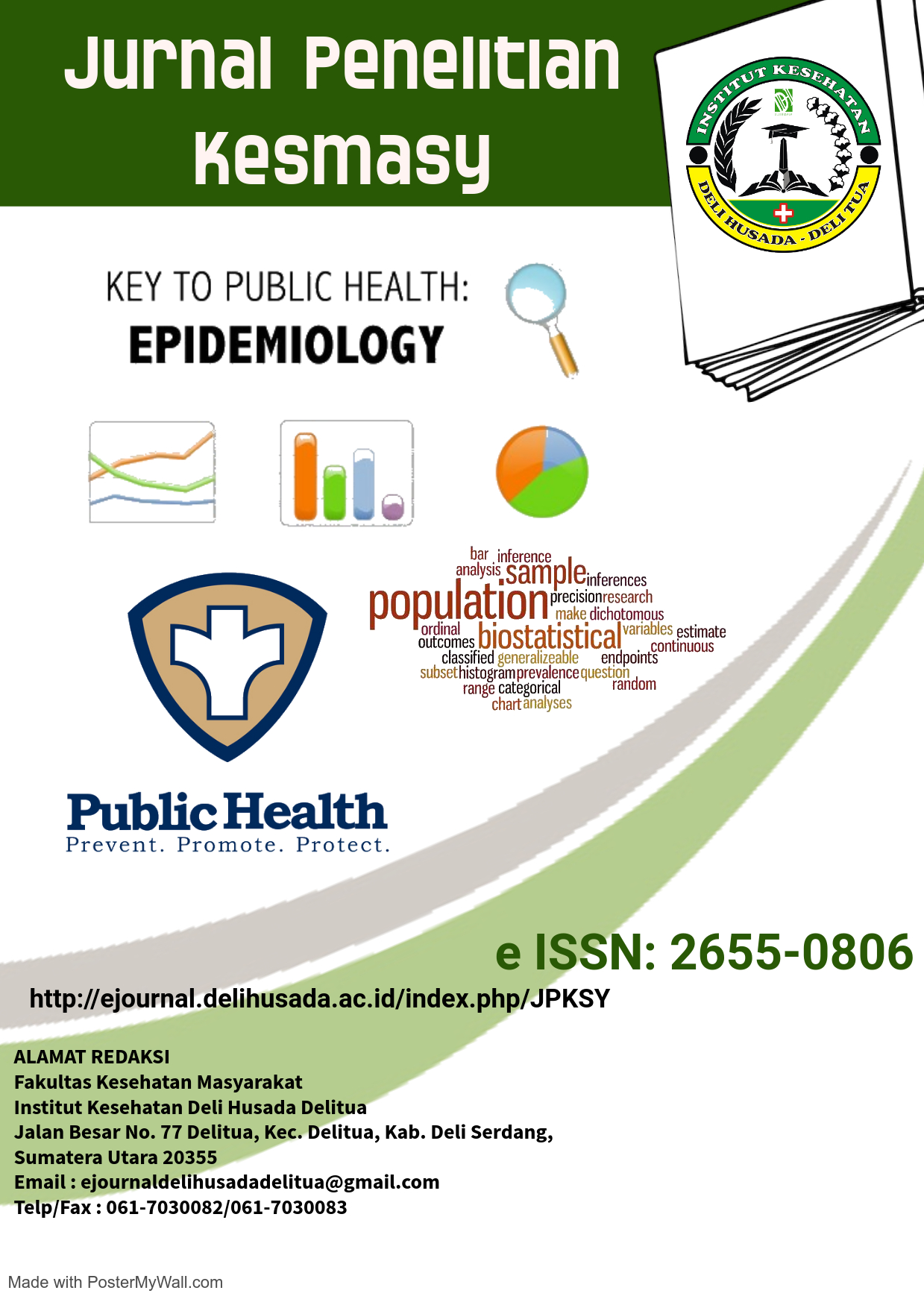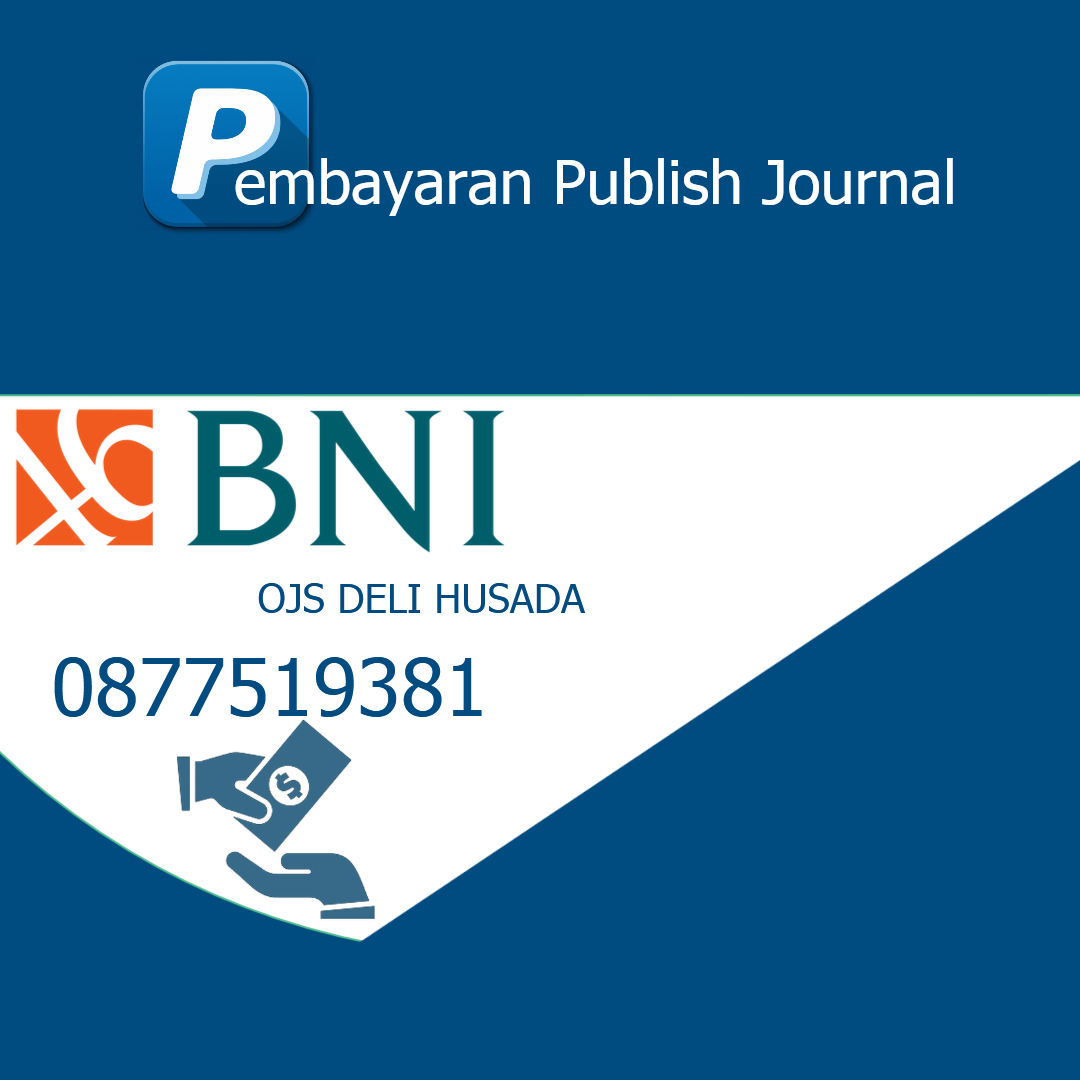PENGARUH SENAM ERGONOMI TERHADAP KELUHAN MUSCULOSKELETAL PADA PEKERJA PENGANGKAT BATU BATA DI DESA KARANG ANYER KABUPATEN SERDANG BEDAGAI
Abstract
Workers are a group that is high risk of experiencing various health problems because the work done is not ergonomically. This causes intension in the muscles which then causes complaints to the musculoskletal system. Prevention efforts that can be done by implementing an ergonomic work system and carrying out ergonomic exercise movements. This research is a quantitative study using a quasy experimental approach with a one group pretest and posttest design research design. Population of 51 people with a sample size of 33 people. Data analysis was carried out univariate and bivariate (using the Wilcoxon Signed Rank Test with a = 0.05. Giving ergonomics is effective to reduce the level of complaints to respondents, namely before given the intervention the respondent experienced a moderate level of complaints and after given the intervention the respondents experienced a decrease in the level of complaints, namely the level of complaints. The average difference in musculoskletal complaints before given intervention was 49.94 and after given intervention 32.12. The results this study showed that p value 0.000 which means p value <0.05, meaning that differences in musculoskletal complaints before and after giving ergonomic exercise were The Wilcoxon Signed Ranks Test on pre and post musculoskletal complaints obtained a p-value of 0.000 or p <0.05, which means that there is a significant effect on reducing musculoskletal complaints. It is better if workers do ergonomic exercise before and after doing work, to minimize muscular complaints. Musculoskletal, so that workers will be more productive in doing their work.
References
Evadarianto, N. and Dwiyanti, E. (2017) .Postur kerja dengan keluhan . pp.97–106.
doi: 10.20473/ijosh.v6i1.2017.97-106
Undang-Undang RI No 13 tahun 2003 pasal 87 ayat 2 tentang Ketenagakerjaan.
Undang-Undang Nomor 13 Tahun 2003 Pasal 86 tentang Hak Untuk Memperoleh Perlindungan K3
Mayasari, D. and Saftarina, F. (2016). Ergonomi Sebagai Upaya Pencegahan Musculoskletal Disorders. Jurnal Kedokteran Universitas Lampunh, 1(2), pp.369–379. http://juke.kedokteran.unila.ac.id/index.php/JK/article/view/1643.
Pratama, D. N. (2017). Identifikasi Risiko Musculoskeletal Disorders(Msds) Pada Pekerja Pandai Besi. The Indonesian Journal of Occupational Safety and Health, 6(1), 78.
doi: 10.20473/ijosh.v6i1.2017.78-87.
Rovitri, A. (2015) Perbedaan Keluhan Musculoskletal Sebelum dan Sesudah Pemberian Workplace Stretching-Exercise Pada Perawat Di RSIA Badrul Aini Medan.
Sugiyono, (2010). Statistika Untuk Penelitian. Bandung.
Sukesi, (2015). Pekerja Sektor Informal Berjuang Untuk Hidup. Jakarta.
Serdang Bedagai, 2020. Karakteristik pekerja Informal pada pekerja Batu Bata.
Tarwaka, Sholichul HA, Lilik Sudiajeng. Ergonomi Untuk Keselamatan, Kesehatan Kerja dan Produktifitas. Surakarta : UNIBA Press, 2004







